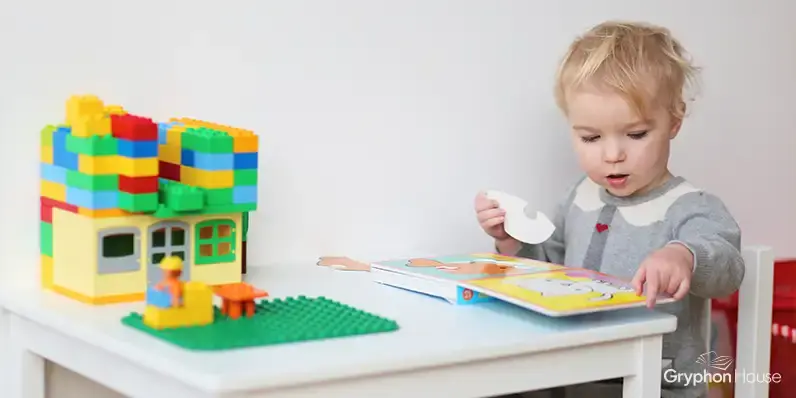Toddler curriculum books are fantastic resources for finding fun activities for infants and toddlers. 125 Brain Games for Toddlers and Twos, by Jackie Silberg, is an engaging collection of classroom activities for toddlers that you can use to make learning more fun!
Toddler curriculum books are fantastic resources for finding fun activities for infants and toddlers. 125 Brain Games for Toddlers and Twos, by Jackie Silberg, is an engaging collection of classroom activities for toddlers that you can use to make learning more fun!
According to Silberg, “the very best way to develop you children’s brain connections is to give children what they need.” In order to ensure your little learners are getting the most from your lessons, you must first provide them with a stimulating environment that is interesting, engaging, and safe for them to explore.
Here are a few popular activities from her book that will have your infants and toddlers exploring and learning in no time!
Reading Games
Age 12 to 15 Months
What Brain Research Says: Reading or telling a story to your child will help “grow” her brain and encourage her to associate books with what she loves most- your voice and closeness.
There are many ways you can help your toddler develop a love of reading, including the following.
- Encourage your toddler to play with books such as "Pat the Bunny," Dorothy Kunhardt’s classic touch-and-feel book, and cloth or study cardboard books.
- Point to pictures in books and name the various objects.
- Sing the nursery rhymes in books.
- Vary the tone of your voice, make funny faces, or do other special effects when you read to stimulate your child’s interest in books and stories.
- Read to your toddler often, but for shirt periods of time.
Free Like the Wind
Age 24 to 27 Months
What Brain Research Says: A child’s capacity to learn and thrive in a variety of settings depends on the interplay between nature (their genetic endowment) and nurture (the kind of care, stimulation, and teaching they receive).
It feels wonderful to hold a scarf in your hand as you move freely to music. It also gives you a sense of balance and control.
- Play some instrumental music as you and your child dance with scarves.
- Swoop the scarf high into the air and then low to the ground.
- Hold the scarf out as you turn in a circle.
- You and your child can each hold one end of the scarf and dance together.
- Whatever you do, your child will copy you.
- This is a very creative game and your child will want to play it again and again.
For more, check out 125 Brain Games for Toddlers!

